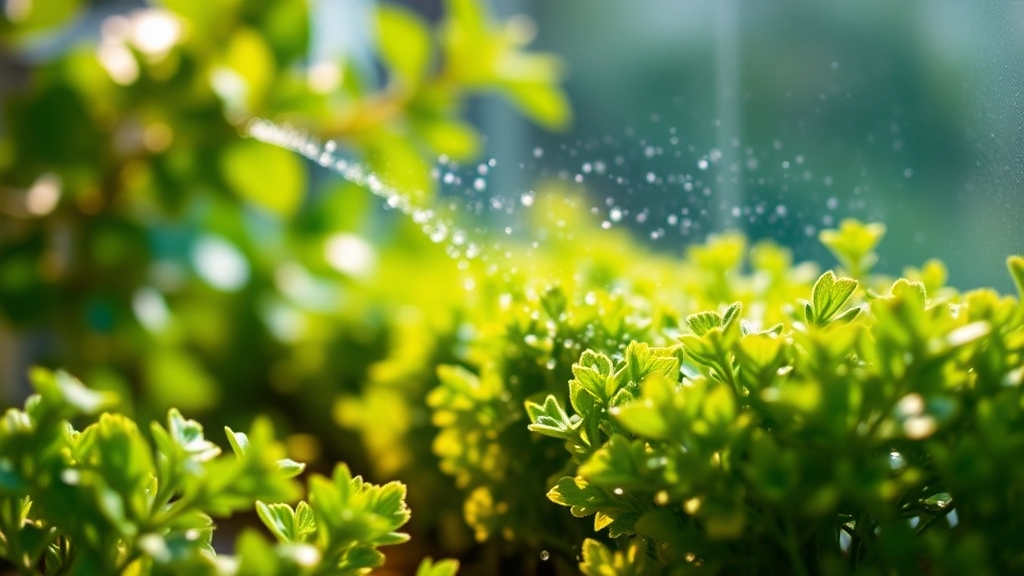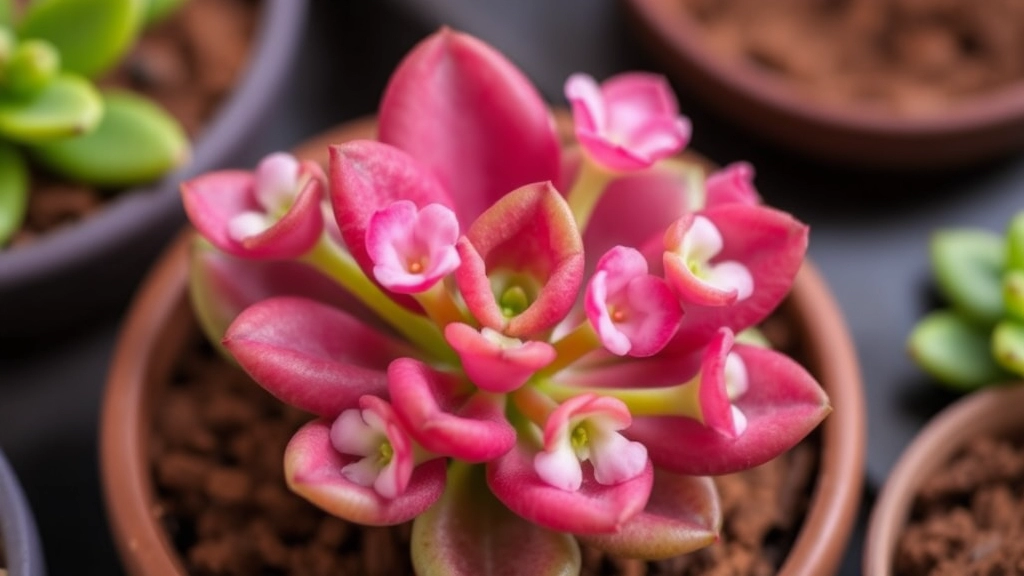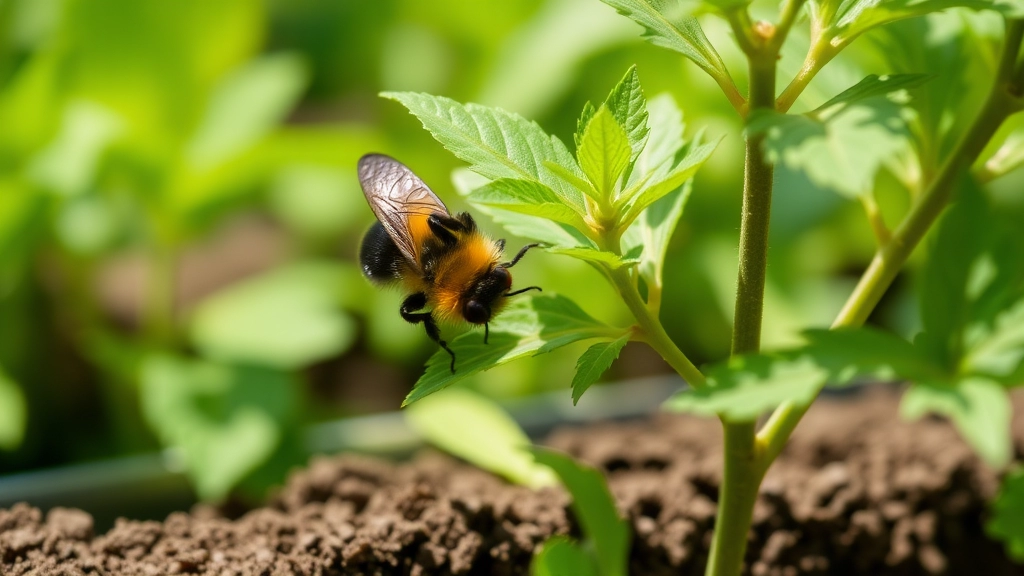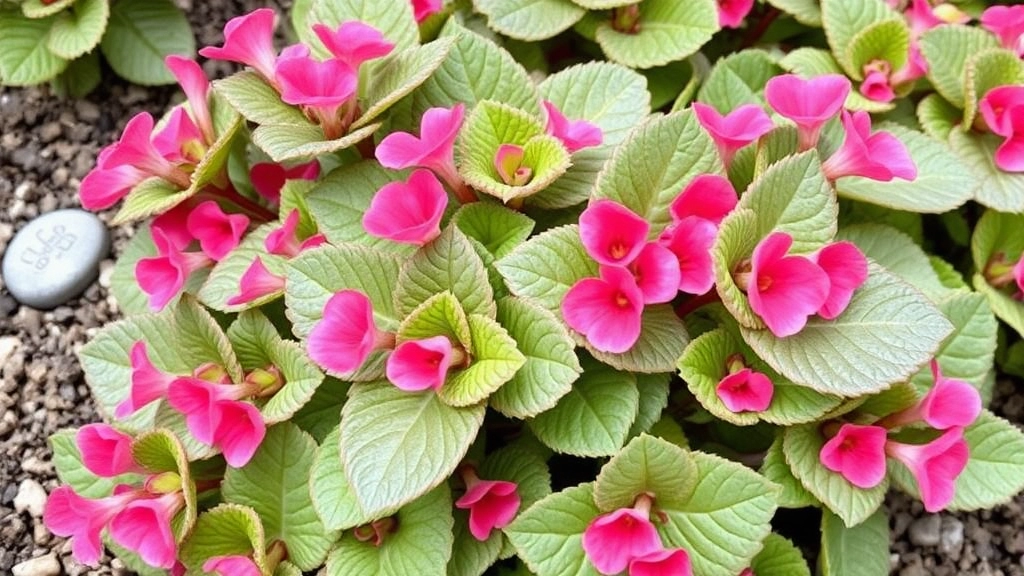Growing the Harpoon Leaf Kalanchoe
When it comes to cultivating the Harpoon Leaf Kalanchoe, understanding its unique needs is crucial. This succulent, known for its striking antler-like leaves, thrives in specific conditions that mimic its native habitat. Ensuring the right balance of light and water is essential for its growth, making it a perfect candidate for xeriscaping or low-water gardening.
Propagation Techniques
Propagation of the Harpoon Leaf Kalanchoe is relatively straightforward, whether through leaf or stem cuttings. By following a few simple steps, you can enjoy a thriving collection of these distinctive plants.
Pest Management
Additionally, being aware of common pests and how to manage them will keep your Kalanchoe healthy and vibrant. Let’s dive into the specifics of growing and maintaining this eye-catching succulent.
When considering the ideal growing conditions for Harpoon Leaf Kalanchoe, many plant enthusiasts often wonder about the specific environment this beautiful succulent thrives in.
### Climate Considerations
Harpoon Leaf Kalanchoe, or Kalanchoe Kewensis, is native to Madagascar, which means it enjoys a warm climate. Here are some key points to ensure optimal growth:
– **Temperature:**
– Ideal range: 20°C to 30°C (68°F to 86°F).
– Protect from frost, as temperatures below 5°C (41°F) can be detrimental.
– **Humidity:**
– Prefers low to moderate humidity levels.
– Avoid overly humid environments to prevent rot.
### Light Requirements
Light is crucial for the health of Harpoon Leaf Kalanchoe. Here’s what to consider:
– **Sunlight Exposure:**
– Prefers bright, indirect sunlight.
– Direct sunlight can scorch the leaves; a south or west-facing window is ideal.
– **Duration:**
– Aim for at least 6 hours of light daily for optimal growth.
### Watering Needs
Watering is often a concern for many growers. Here’s how to manage it effectively:
– **Frequency:**
– Allow the soil to dry out completely between watering.
– Typically, this means watering every 2-3 weeks, depending on the season.
– **Method:**
– Water thoroughly, ensuring excess drains out.
– Avoid letting the plant sit in water, as this can lead to root rot.
For more detailed care tips, you might find the [complete guide to Kalanchoe plant care](https://planthq.org/complete-guide-to-kalanchoe-plant-care/) helpful. Additionally, if you’re dealing with issues like leaf drying, check out the article on [why Kalanchoe leaves dry out](https://planthq.org/why-are-my-kalanchoe-leaves-drying-out-causes-and-fixes/) for potential causes and fixes.
Light and Watering Requirements

So, you’re wondering how to keep your Harpoon Leaf Kalanchoe thriving, right?
Let’s break it down.
Light Requirements
First off, Kalanchoe Kewensis loves bright light.
Here’s what you need to know:
- Direct Sunlight: Aim for at least 6 hours of direct sunlight daily. A sunny windowsill is ideal.
- Indirect Light: If direct sun isn’t an option, it can tolerate bright, indirect light too. Just don’t let it sit in the shade for too long.
- Signs of Insufficient Light: If the leaves start stretching or losing their vibrant colour, it’s time to move it closer to the light source.
Watering Tips
Now, let’s chat about watering. This is where many folks go wrong.
- Frequency: Water when the top inch of soil feels dry. This usually means every 2-3 weeks, depending on your environment.
- Avoid Overwatering: Kalanchoe prefers to be on the drier side. Overwatering can lead to root rot, which is a nightmare.
- Drainage: Make sure your pot has drainage holes. This helps excess water escape, keeping your plant happy.
Quick Recap
To sum it up:
- Bright light is a must.
- Water when dry, not too often.
- Good drainage is key.
Soil and Potting Mix Selection
When it comes to nurturing your Harpoon Leaf Kalanchoe, the right soil and potting mix are essential for its health and growth. You might be wondering, “What type of soil is best for my Kalanchoe?”
Ideal Soil Composition
Kalanchoe Kewensis thrives in well-draining soil that mimics its native environment. Here are some key components to consider:
- Cactus Mix: A pre-mixed cactus or succulent soil is often ideal. These blends are designed to provide excellent drainage.
- Perlite or Pumice: Adding perlite or pumice to your potting mix can enhance aeration and drainage. Aim for a mix with about 30% of these materials.
- Organic Matter: Incorporating a small amount of organic matter, like compost, can provide essential nutrients without compromising drainage.
Potting Tips
Choosing the right pot is just as important as the soil itself. Here are some tips:
Propagation Techniques for Kalanchoe Kewensis

As we explore how to care for your Harpoon Leaf Kalanchoe, understanding propagation techniques can help you expand your collection or share with friends.
Why Propagate Kalanchoe Kewensis?
Many plant enthusiasts wonder how to grow more of these beautiful succulents without purchasing new ones. Propagation allows you to create new plants from a single parent, saving money and enriching your garden.
Methods of Propagation
- Leaf Cuttings
- Select a healthy leaf from the parent plant.
- Allow it to dry for a day or two to form a callus.
- Place the leaf on well-draining soil, ensuring the cut end is in contact with the soil.
- Water sparingly until roots develop.
- Offsets
- Look for small plantlets or offsets at the base of the parent plant.
- Gently separate them from the main plant.
- Replant them in their own pots with suitable soil.
- Water lightly to encourage root establishment.
- Stem Cuttings
- Cut a healthy stem with a few leaves attached.
- Let the cut end dry for a few days to form a callus.
- Place in soil, ensuring the cut end is buried.
- Water minimally until roots form.
Tips for Successful Propagation
- Timing: Early spring is the best time for propagation, as the plant is coming out of dormancy.
- Environment: Keep cuttings in a warm, bright location but out of direct sunlight to prevent scorching.
- Humidity: A light humidity level can encourage root growth. Consider using a plastic bag to create a mini greenhouse effect.
Common Pests and How to Prevent Them
As we delve deeper into caring for your Harpoon Leaf Kalanchoe, it’s essential to consider the common pests that may disrupt its healthy growth.
Identifying Common Pests
Kalanchoe plants can fall victim to a few notorious pests, including:
- Mealybugs: These small, white, cottony insects often hide in leaf axils and on stems.
- Spider Mites: Tiny and often invisible to the naked eye, spider mites leave fine webbing on the plant.
- Aphids: These small, green or black insects cluster on new growth and can cause significant damage.
- Scale Insects: They appear as small, brown bumps on the leaves and stems.
Prevention Strategies
To keep your Kalanchoe thriving, consider these effective prevention strategies:
- Regular Inspection: Check your plant weekly for any signs of pests. Early detection is key.
- Maintain Airflow: Ensure your plant has good airflow around it. Crowded conditions can invite pests.
- Keep Leaves Clean: Wipe down leaves with a damp cloth to remove dust and deter pests.
- Use Neem Oil: A natural pesticide, neem oil can be sprayed on the plant to repel pests without harming it.
- Quarantine New Plants: If you bring home a new plant, keep it separate for a few weeks to ensure it’s pest-free.
- Healthy Plant Care: A well-cared-for plant is less susceptible to pests. Ensure optimal light, water, and nutrition.
For more detailed care instructions, check out our Complete Guide to Kalanchoe Plant Care and learn about Kalanchoe Mother of Thousands Care, Propagation, and Flowering to keep your plants healthy and thriving.
Seasonal Fertilization for Optimal Growth

Are you wondering how to keep your Harpoon Leaf Kalanchoe thriving all year round?
Fertilization plays a crucial role in ensuring your plant gets the nutrients it needs to flourish.
Here’s a simple breakdown of how to fertilize your Kalanchoe Kewensis seasonally:
- Spring Awakening: As the days get longer and warmer, your plant will be gearing up for growth.
- Use a balanced, water-soluble fertilizer diluted to half strength.
- Apply every 4-6 weeks to give it a boost.
- Summer Surges: During the peak growing season, your Kalanchoe may need a little extra love.
- Stick to the same balanced fertilizer, but you can increase to every 3-4 weeks if you notice vigorous growth.
- Autumn Adjustments: As temperatures drop, your plant will start to slow down.
- Reduce fertilization to once every 6-8 weeks.
- This helps prepare it for dormancy without overloading it with nutrients.
- Winter Rest: Your Kalanchoe will be in a state of rest during the colder months.
- No need to fertilize; it’s all about conserving energy.
- Just keep an eye on watering—less is more!
Remember, over-fertilizing can lead to burnt roots and unhealthy plants.
I’ve seen it happen, and trust me, it’s not pretty.
So, always err on the side of caution and follow the guidelines above.
Pruning and Maintaining the Plant’s Shape
When it comes to keeping your Harpoon Leaf Kalanchoe looking its best, pruning plays a crucial role.
You might wonder: How often should I prune? What’s the best way to maintain its shape?
Pruning not only enhances the aesthetic appeal of your Kalanchoe but also promotes healthy growth.
Here are some straightforward tips to help you get started:
- Timing is Key: Prune during the growing season, typically in spring or early summer. This encourages new growth.
- Cutting Techniques:
- Use clean, sharp scissors or pruning shears to avoid damaging the plant.
- Trim back any leggy stems or dead leaves to encourage bushier growth.
- Shape Maintenance:
- Aim for a balanced shape by selectively pruning branches.
- Remove any crowded stems to allow for better air circulation.
- Monitor Growth: Regularly check your plant for signs of overgrowth, and don’t hesitate to prune as needed.
By incorporating these practices, you’ll ensure that your Kalanchoe remains healthy and visually appealing. For more detailed tips, you may want to check out this comprehensive guide on Kalanchoe Panda Plant care. Additionally, if you’re dealing with specific leaf issues, this article on Kalanchoe leaf problems might be helpful.
Best Uses for Kalanchoe in Xeriscaping
So, you’ve got your Harpoon Leaf Kalanchoe thriving, and now you’re wondering how to showcase it in a xeriscape garden.
Kalanchoe is not just a pretty face; it’s a superstar in water-wise landscaping.
Here’s why it’s perfect for xeriscaping:
- Drought Resistance: Kalanchoe stores water in its leaves, making it ideal for dry climates.
- Low Maintenance: Once established, it requires minimal care, freeing up your time for other garden projects.
- Versatile Aesthetics: With its vibrant foliage and unique shapes, it adds a splash of colour and texture to any garden design.
- Pollinator Friendly: The flowers attract bees and butterflies, making your garden buzz with life.
Planting Ideas
Here are some creative ways to incorporate Kalanchoe into your xeriscape:
- Rock Gardens: Pair it with stones and gravel for a natural look.
- Container Displays: Use pots to create focal points on patios or pathways.
- Border Edging: Plant along walkways for a lush, inviting feel.
- Succulent Mixes: Combine with other drought-tolerant plants for a diverse garden bed.
Example Scenario
Imagine walking through your xeriscape garden.
You spot clusters of Kalanchoe nestled among smooth stones, their leaves shimmering in the sunlight.
The bees are buzzing around the flowers, and you can’t help but smile.
It’s a low-water paradise that looks stunning year-round.
For more information on how to care for your Kalanchoe, check out our expert tips on Kalanchoe care. If you’re interested in propagation, you might find our step-by-step guide to Kalanchoe leaf propagation helpful.
FAQs for Harpoon Leaf Kalanchoe
What are the light requirements for Harpoon Leaf Kalanchoe?
The Harpoon Leaf Kalanchoe thrives in bright light. Aim for at least 6 hours of direct sunlight daily. If direct sunlight isn’t available, it can tolerate bright, indirect light. Ensure it doesn’t sit in the shade for too long as this can cause the leaves to stretch or lose their vibrant color.
How often should I water my Harpoon Leaf Kalanchoe?
Water your Harpoon Leaf Kalanchoe when the top inch of soil feels dry. This usually means watering every 2-3 weeks, depending on your environment. Avoid overwatering as it can lead to root rot. Ensure your pot has drainage holes to allow excess water to escape.
What are the signs that my Kalanchoe isn’t getting enough light?
If the leaves start stretching or losing their vibrant color, it’s a sign that your Kalanchoe isn’t getting enough light. Move it closer to a light source to address this issue.
How can I propagate my Harpoon Leaf Kalanchoe?
There are several methods to propagate your Kalanchoe:
- Leaf Cuttings: Select a healthy leaf, let it dry for a day or two to form a callus, place it on well-draining soil, and water sparingly until roots develop.
- Offsets: Look for small plantlets at the base of the parent plant, gently separate them, replant in suitable soil, and water lightly.
- Stem Cuttings: Cut a healthy stem with leaves, let it dry for a few days to form a callus, place in soil, and water minimally until roots form.
When is the best time to propagate Kalanchoe Kewensis?
The best time for propagation is early spring when the plant is coming out of dormancy. This allows the new plants to establish themselves during the growing season.
How should I fertilize my Harpoon Leaf Kalanchoe throughout the year?
Fertilization varies by season:
- Spring: Use a balanced, water-soluble fertilizer diluted to half strength every 4-6 weeks.
- Summer: Continue with the same fertilizer, but increase to every 3-4 weeks if growth is vigorous.
- Autumn: Reduce fertilization to once every 6-8 weeks as the plant prepares for dormancy.
- Winter: No need to fertilize; the plant is resting. Focus on minimal watering.
Can I over-fertilize my Kalanchoe?
Yes, over-fertilizing can lead to burnt roots and unhealthy plants. Always err on the side of caution and follow the seasonal guidelines for fertilization to keep your plant healthy.
References
-
The Spruce – Kalanchoe Thyrsiflora Plant Profile
-
Gardener’s World – How to Grow Kalanchoe
-
The Old Farmer’s Almanac – Kalanchoe Growing Guide
